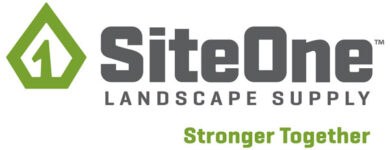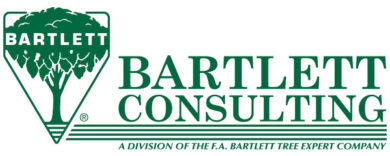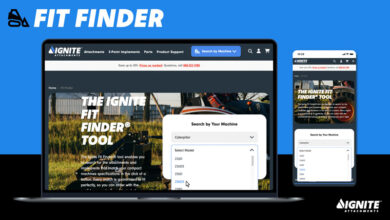5 tips for surviving a sluggish economy
By Bob Clements
Just because the economy is sluggish, doesn’t mean your business has to be. If you were to ask dealers right now about the current state of their business, nine times out of 10 the conversation will shift toward the economy. As owners, we often get sucked into believing if the economy is slow, then we’re going to have an off year, and by thinking that way, we create a self-fulfilling prophecy.
When business is slow, we must become more creative in finding ways to improve our profitability. As owners, we all know that our existing customers are the best source of future growth. In business, the idea is to get your customer to buy more, return more often, or bring us more customers by their word of mouth.
Let’s take a look at five ways to position you and your dealership to take advantage of this uncertain and slow economy.
1. Fire up your existing customers
Based upon research, by putting forth the effort to increase customer loyalty by 10 percent, you will increase your revenue by 5 percent. If you think about that and how hard most of you work to get a 5-percent increase in sales, it makes sense to expend some of that energy on developing more loyalty in your existing customer base rather than on searching for new customers.
One of your objectives during a sluggish economy is to find ways to fire up the relationship with your existing customers. By accomplishing this objective, your customers will be more loyal to you and your profits will increase. Ultimately, you want to be more “on the top of the mind” of your customers, so that when they think about outdoor power equipment, parts or service, they think about you. Or, when your customers know of friends needing service, parts or equipment, they refer them to your dealership.
Don’t confuse customer loyalty with customer satisfaction. Loyal customers return to your dealership over and over again. They seldom beat you up on price and are more than happy to tell their friends about your dealership and their great experiences with you. Contrast that to a satisfied customer. Satisfied customers are only satisfied until your competitor makes them more satisfied. They are not necessarily a repeat customer, and they typically don’t go out of their way to recommend the companies they do business with to another person. Granted, it’s important to have satisfied customers who might come back compared to dissatisfied customers who won’t come back, but it’s also important not to confuse satisfied and loyal.
Think about yourself as a consumer. If you buy gas for your car or truck from the same gas station every time you need fuel, you are a satisfied customer. If the price of gas at your station goes up 20 cents per gallon tomorrow while the gas station down the street holds its price and is now 20 cents a gallon less, where are you going to fill up that 30-gallon fuel tank? If you go down the street to save $6 on the price, you were a satisfied customer of your gas station. You liked what it did and what it offered, and, as long as the other gas station was competitive, you did business with your gas station. When a significant change came along (20 cents a gallon more for gas), you became more satisfied with the gas station down the street. Now it doesn’t mean that you won’t go back to your original gas station if its price comes down or its competitor has a price increase, but you made a change to improve your level of satisfaction. If you were loyal to the gas station you currently buy from, you would have paid the extra 20 cents a gallon because of your emotional ties to its employees.
So how do you improve the loyalty of your existing customers? You can do two simple things:
1) Work on building a better relationship by improving the quality and type of communication that occurs between both you and them. Sending out hand-written thank-you notes when they bring in equipment to have serviced or buy something new will go a long way toward creating an emotional bond that will increase their loyalty to your store.
2) Start a practice of calling your customers to ask how you are doing and to find out ways you can improve their experience in your dealership. I know it seems like it will take a lot of time, but there isn’t a single dealership that I have visited during the past 90 days that didn’t have at least one employee hanging out, looking for something to do. Rather than having that employee sweep the floor for the fifth time of the week, have them pick up the phone and call 30 customers a day to see if they have any needs you can meet. That could easily be accomplished in two hours with time to spare and would have a positive impact on your customers, because none of your competitors have done it for them in the past.
The phone call could be as simple as follows: “Good morning/afternoon, Mr. Smith! My name is Bob Clements with ABC Outdoor Power Equipment. I wanted to take a moment to thank you for your past business, and was wondering if you might have any suggestions on how we could improve on our dealership so that it would make your life easier when you use us in the future.”
The key is to keep it simple, thank them for any input, and send them a hand-written thank-you note for the time they spent with you. It will help grow that loyalty and get them talking about you to their friends.
2. Improve your selling skills
Just because the economy is sluggish, doesn’t mean that people aren’t still buying — they are just more cautious with the money they are spending. Last year, most of you tightened your belts another notch, worked to cut your costs, discounted your wholegoods more than you would have liked, and accepted a smaller profit margin, hoping that you would survive to fight another day. Well, you did, but you don’t have any fat left to cut out of your business. So, now it’s time to sharpen those selling skills, so that you can improve your odds of closing a higher percentage of the customers that come through your doors.
Although there may be less equipment selling opportunities in the 2010 season, having strong selling skills will enable you to take advantage of the opportunities that do exist. About half of my speaking time is spent working with sales teams to improve their effectiveness. Most of my trainees want me to teach them how to be more effective in closing, yet it’s not closing, but qualifying that they need to focus their time on. I can’t tell you how often I see salespeople in dealerships that have never been taught how to properly qualify a customer as to what they are willing to buy. By asking a few simple questions, you can quickly determine what a customer wants to buy, how much they are willing to spend, and when they most likely will be ready to purchase it. If you would like to improve your qualifying skills, send me an e-mail at bob@bobclements.com and I will send you a link to download a program I teach on the subject. With business still slow for most of you, it’s a perfect time to sharpen those sales skills.
3. Ask current customers why they do business with you
There are only so many customers to go around, and your goal is to attract as many as possible. Most of the desirable customers are already doing business with one of your competitors, so to get them into your store, you have to let them know why they should consider doing business with you. You have to tell them in your ads, flyers, door hangers and billboards what makes you different than all the rest. In business, that difference is called your “unique selling proposition” or “USP.” Defining your USP involves coming up with a statement that specifies what it is that makes your dealership different from your competitors.
If I walked up to you right now and asked, “Why should I buy a mower from you instead of the dealer down the street?” what you would tell me is your USP?
If you don’t know your USP, you are going to have a difficult time getting competitors’ customers to give you a shot at their business. I am fairly confident that potential customers aren’t going to literally ask you for your “USP,” but that information is what they want to hear from you when they are trying to make a buying decision.
Whatever you define to be your “USP,” it should be a part of all of your marketing efforts, from your Web site to any direct-mail pieces or print or broadcast advertising messages. It should also be a part of the language you and your employees use to talk about your dealership to potential customers.
4. Look for new opportunities
Too often in business we get settled into what we do, and quit looking for new ways to sell our services. Mobile service can be a very profitable part of a dealership if it is set up correctly and charged out properly. Many customers do not have the ability to easily get their equipment to a dealership for service, so they just don’t have the service done. Yet, with a small trailer and a truck that you most likely already have, you can put out a “C” level tech to do basic service and make good money doing it.
The same holds true with parts. Many of the dealers we work with do a decent parts business with their city or county government, yet they could easily double the business by simply installing a cabinet or shelves into their maintenance department and stocking it with fast-moving parts for all of their in-use power equipment. I was just visiting one of our dealers in eastern Ohio who has two cities and one large commercial cutter that are excited about having parts on hand so their people don’t have to run to the dealership every time they need a filter or blade. The idea of moving parts outside of the dealership is frightening to some dealers, but with the right type of customer, it’s a safe and simple way to double or triple the parts sales you are currently getting from that customer.
5. Slow down your service department
That headline should have stopped most of you in your tracks if you have read my articles in OPE or attended my service workshops. You know I am all about moving equipment through the service department in a quick and efficient manner. Yet, I also preach to techs and service managers that our goal in service is to move equipment through as quickly as possible, while at the same time maximizing the profit on the equipment while it’s in the shop.
One of the simplest ways to improve your billing on the equipment you have in your service department is to pull the dipstick out of the machine while the customer is dropping it off, showing them the pitch black oil, and asking, “When was the last time you serviced your machine?” Most of them won’t know. Then, you simply ask, “Would you like for us to service it while we have it in for repair?” When you ask, nearly half will say “sure,” increasing your labor and parts sales. For our average dealer, it adds about an extra $50,000 in labor and parts sales to their year-end numbers. Not bad for just asking a simple question.
This year, more than ever, it is imperative that you don’t sit back and wait with your fingers crossed, hoping to make it one more year. I encourage you to take just one of the five ways I outlined, practice it this season, and position yourself for success.
Bob Clements is the president of Bob Clements International, Inc., a consulting firm that specializes in the development of high-performance dealerships. His organization works hands on with dealerships throughout North America, helping them attain the personal freedom and financial wealth all owners strive to achieve. For more information, contact Bob Clements at (800) 480-0737 or bob@bobclements.com or visit his Web site at www.bobclements.com.




